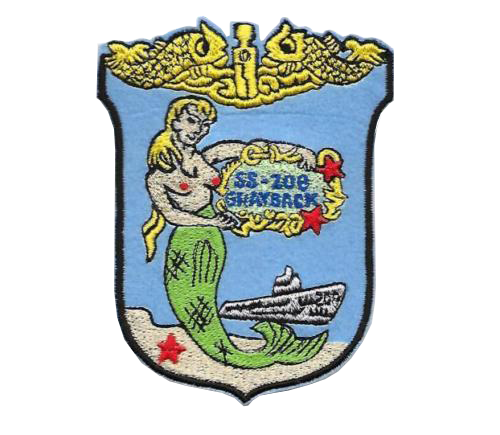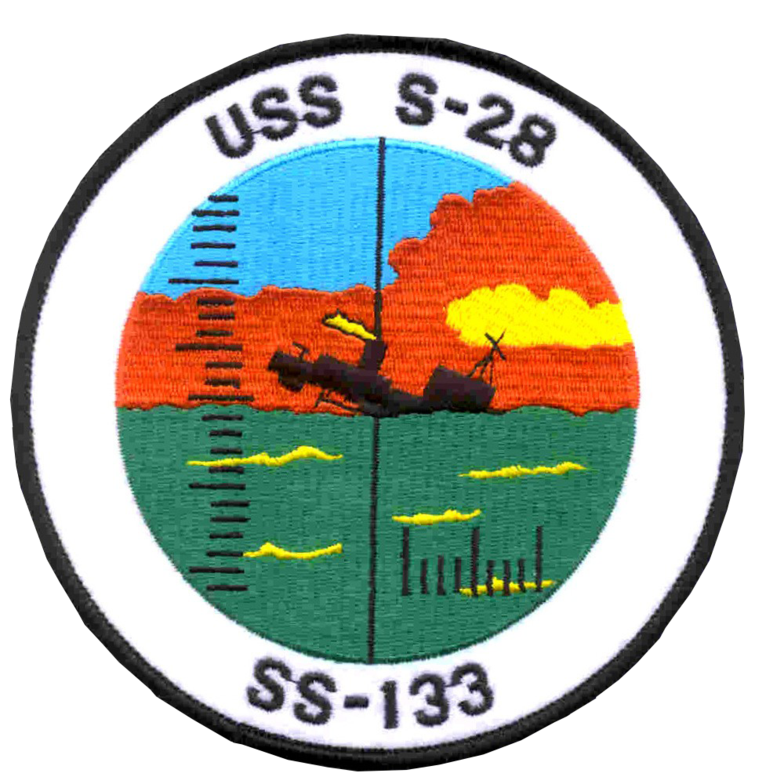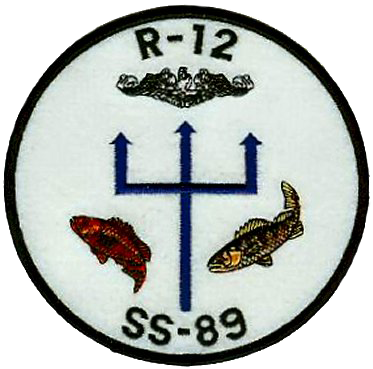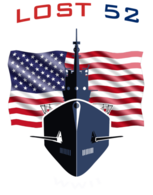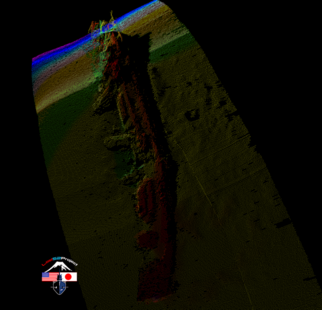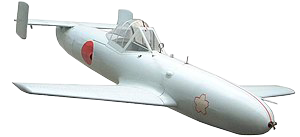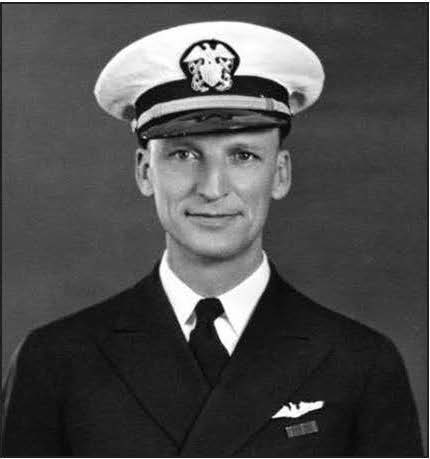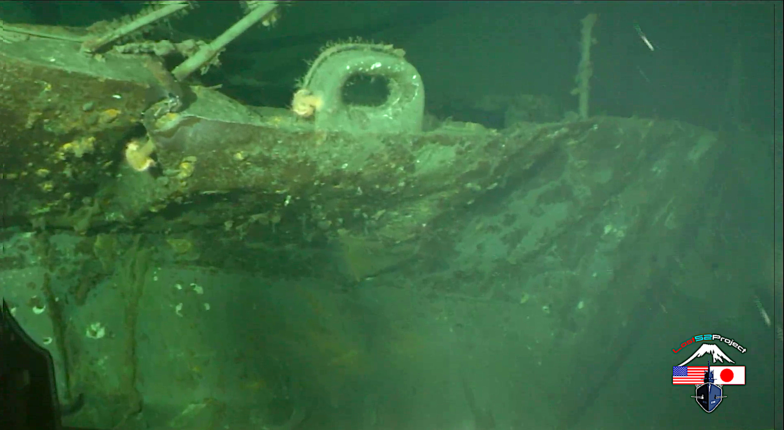a 501(c)3 Ocean Outreach Project
Honoring the men their memory and their mission
USS Mannert L. Abele DD-733
Sumner Class Destroyer
First WWII Destroyer sank by Rocket Powered Super Kamikaze Discovered off Japan
NEW YORK, NY: May 2023 Veteran Ocean explorer/CEO of Tiburon Subsea, Tim Taylor and his “Lost 52 Project” team have discovered 84 lost US sailors and the WWII Sumner Class Destroyer “USS Mannert L. Abele (DD-733)” destroyed by Super rocket powered kamikazes in Japanese waters. The accomplishment has just recently been authenticated by the US Navy.
This discovery is very personal to Mr. Taylor. His father served in the Navy as part of the lead invasion force in the battle of Okinawa and he witnessed the Kamikaze firsthand when one plowed into his ship the USS Telfair.
My father came close to the same fate of the crew of the Abele just days earlier.” This was a very emotive discovery for me. Connecting me to my father” states Taylor. “
April 12th, 1945, the same day Franklin Roosevelt passed, the Abele was attacked and lost off Okinawa in 3 Minutes. Survivors witnessing the sinking thought the destroyer was split into two pieces like the Titanic. The exploration team findings show that the Kamikazes did destroy the keel and the ship folded as she sank to the bottom in 1380 meters (4500 feet) of water in a heavily volcanically active area off Okinawa.
The USS Abele was serving as a radar ship positioned 90 miles offshore between Okinawa and mainland Japan as part of Operation Iceberg. Over 50,000 American casualties, including 12,500 soldiers and sailors were killed, and the greatest number of combat fatigue cases recorded of any single American battle in history.
Positioned as an early warning scout for incoming Japanese ships and aircraft, the USS Mannert Abele was the first successful attack and sinking by Japan’s new Super suicide weapon the Yokosuka MXY-7 Ohka or “cherry blossom”. Ohka was a purpose-built, rocket-powered human-guided kamikaze attack aircraft deployed at the end of the war. It had an extremely short range and was carried into action by Mitsubishi G4M2e Model 24J "Betty" bomber. The pilot would release from the bomber and glide towards the target and when close enough fire the three solid-fuel rockets, one at a time or in unison, and fly the missile towards his target with devastating results.
The USS Mannert L. Abele was named after commander of the US Submarine Grunion. The Grunion was lost with all hands in a battel offshore the Aleutian Island Kiska in Alaska in 1942. Initially discovered by his sons in 2006, the Grunion’s bow was discovered by the Lost 52 Project in 2018 and expansive 4D imaging was collected by Mr. Taylor and his team. It was the first US ship to be lost to a deadly new weapon born out of Japan’s desperation.
The battle of Okinawa the savagery was overshadowed by the death of Franklin Roosevelt on April 12th, and Germany’s surrender on May 8th, 1945. Only 5 weeks (June 22, 1945) after “Operation Iceberg” was declared accomplished the first atomic bomb was dropped on Japan on August 6th.
Lost 52 Project Dedicated to preserving and telling the story of WWII Submarines and Submariners. Tiburon Subsea, Inc specializes in building autonomous systems to empower discovery, ocean data collection and conservation.
USS Mannert L. Abele (DD-733), an Allen M. Sumner-class destroyer, is the only ship of the United States Navy to be named for Mannert Lincoln Abele, a World War II submarine commander who posthumously received the Navy Cross for his heroism in the Pacific Theater. The destroyer was sunk on April 12, 1945, near Okinawa with 84 casualties. It was the first US warship to be damaged or sunk by the rocket powered Yokosuka MXY7 Ohka suicide flying bomb.
On March 3rd and 4th and again from 8th and 10th the Mannert L. Abele served on the bombardment line as effective naval firepower provided valuable support for the Marines' ground campaign. On March 10th they steamed to Ulithi, arriving on March 12th.
Mannert L. Abele departed on March 20th for radar picket duty off Ulithi and the next day they joined TF 54, Rear Admiral Morton Deyo’s Gunfire and Covering Force, for the invasion of Okinawa. They reached the Ryukyus on March 24th, and during the next week they screened heavy shore bombardment ships during pre-invasion operations from Kerama Retto to le Shima. In addition, they pounded Japanese positions and supported UDT operations at proposed assault beaches on Okinawa.
As American troops stormed the beaches on April 1st, Mannert L. Abele provided close fire support before beginning radar picket patrols northeast of Okinawa later that day. On April 3rd, three Japanese planes attacked them, but the destroyer shot down two of the raiders. Released from picket duty on April 5th, they resumed screen patrols off the beaches. On April 6th, they helped shoot down an attacking twin engine bomber.
The next day, Mannert L. Abele joined TF 54 to protect the transports off Okinawa from ships of the Surface Special Attack Force, including the Japanese battleship Yamato, steaming south from Japan in a final effort to destroy American sea-power. However, planes of the Fast Carrier Task Force wiped out the Japanese thrust with bomb and torpedo strikes, sinking six Japanese ships and damaging the four surviving destroyers.
Mannert L. Abele resumed radar picket duty on April 8th, patrolling station No. 14 about 70 nautical miles Northwest of Okinawa, accompanied by LSM(R)-189 and LSM(R)-190. Midway through the afternoon watch on April 12th, Mannert L. Abele caught the full force of the kamikaze. Three Aichi D3A "Vals" attacked at 13:45, but gunfire drove off two and set fire to the third which failed in an attempt to crash into LSM(R)-189. By 14:00, between 15 and 25 additional planes “had come down from the North and the ship was completely surrounded.” Except for one light bomber which challenged and was damaged by the destroyer's fire, the enemy kept outside their gun range for more than half an hour.
At about 14:40, three Mitsubishi A6M Zeros broke orbit and closed to attack. Mannert L. Abele drove off one and shot down another about 4,000 yd (3,700 m) out. Despite numerous hits from 5 inch and light anti-aircraft fire, and spewing smoke and flame, the third kamikaze crashed into the starboard side and penetrated the after-engine room where it exploded. LSM(R)-189's captain, James M. Stewart, reported, "It is difficult to say what it was that hit the DD 733. This officer personally saw what appeared to be two (2) planes orbiting in a northerly direction from the DD 733, and then suddenly, what appeared to be, one plane, accelerated at a terrific rate, too fast for us to fire at.This plane dove at an angle of approximately 30 degrees, starting at about four miles [7.5 km] away. Since we had no air search radar, the above statements are merely my own conclusions." (This may have been one of the earliest intelligence reports of the Ohka kamikaze aircraft.)
Immediately, Mannert L. Abele began to lose headway. The downward force of the blast, which had wiped out the after-engineering spaces, broke the destroyer's keel midships, abaft No. 2 stack. The bridge lost control and all guns and directors lost power.
A minute later, at about 14:46, Mannert L. Abele took a second and fatal hit from a Ohka that struck the starboard waterline abreast the forward fireroom. Its 2,600 lb (1,200 kg) warhead exploded, buckling the ship, and “cutting out all power, lights, and communications.”
Almost immediately, the destroyer broke in two, her midship section obliterated. Her bow and stern sections sank rapidly. As survivors clustered in the churning waters enemy planes bombed and strafed them. However, LSM(R)-189 and LSM(R)-190 shot down two of the remaining attackers, repelled further attacks, and rescued the survivors. The number of casualties of her sinking was 84 killed according to a book by Roy S. Andersen who was among the survivors.
Mannert L. Abele was the first of three radar pickets hit by an Ohka, but the only ship sunk by one during the Okinawa campaign. Despite the Japanese efforts, the radar pickets successfully completed their mission, thus ensuring the success of the campaign for the Americans.
Roy S. Anderson, a survivor of the Mannert L. Abele sinking, wrote a detailed history in a book published in 2007 by Jana Press entitled, Three Minutes off Okinawa: The Sinking of the Radar Picket Destroyer the U. S. S. Mannert L. Abele by Japanese Kamikaze Aircraft.
The Yokosuka MXY-7 Ohka "cherry blossom" was a purpose-built, rocket-powered human-guided kamikaze attack aircraft employed by Japan against Allied ships towards the end of the Pacific War during World War II. Although extremely fast, the very short range of the Ohka meant that it had to be carried into action as a parasite aircraft by a much larger bomber. In action during the Battle of Okinawa in 1945, Ohka’s were able to sink or damage some escort vessels and transport ships but no major warships were ever sunk.
Named after the commander of the submarine USS Grunion, Mannert Lincoln "Jim" Abele

